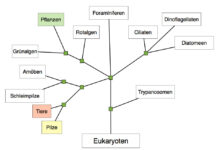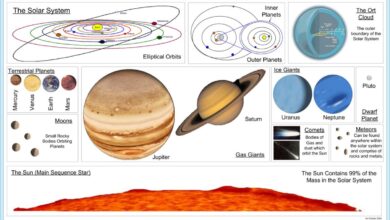System Architecture: 7 Powerful Insights You Must Know
Ever wondered how complex software systems stay organized, scalable, and efficient? The secret lies in system architecture—the blueprint that shapes how components interact, scale, and evolve. In this deep dive, we’ll explore everything from core principles to real-world models, giving you the tools to design smarter, future-ready systems.
What Is System Architecture? A Foundational Understanding

At its core, system architecture is the high-level structure of a software or IT system. It defines how different components—like servers, databases, APIs, and user interfaces—interact and communicate. Think of it as the architectural plan of a building: without it, construction would be chaotic and unstable.
The Role of System Architecture in Modern Technology
System architecture isn’t just for large enterprises. From mobile apps to cloud platforms, every digital product relies on a well-thought-out architecture. It ensures performance, scalability, security, and maintainability. Without a solid architecture, even the most feature-rich application can fail under real-world load.
- Enables seamless integration between components
- Supports long-term scalability and upgrades
- Reduces technical debt and maintenance costs
Key Stakeholders in System Architecture Design
Designing a system architecture involves multiple stakeholders, each with unique concerns. Architects focus on structure and patterns, developers on implementation, operations teams on deployment and monitoring, and business leaders on cost and time-to-market.
“Good system architecture balances technical excellence with business value.” — Martin Fowler, Chief Scientist at ThoughtWorks
Core Principles of Effective System Architecture
Successful system architecture isn’t built on guesswork. It follows time-tested principles that guide decision-making and ensure robustness. These principles help architects avoid common pitfalls and build systems that stand the test of time.
Modularity and Separation of Concerns
One of the most critical principles is modularity—the idea that a system should be divided into independent, interchangeable components. Each module handles a specific function, reducing complexity and making the system easier to maintain.
For example, in a web application, the user interface, business logic, and data storage should be separate modules. This separation allows teams to update one part without breaking others. The Single Responsibility Principle from SOLID design reinforces this idea.
Scalability and Performance Optimization
A system must handle growth—whether in users, data, or transactions. Scalability refers to a system’s ability to expand its capacity efficiently. There are two types: vertical (adding more power to existing machines) and horizontal (adding more machines).
Architects must design for both. For instance, using load balancers and distributed databases allows horizontal scaling. Tools like AWS Elastic Load Balancing help distribute traffic across servers, ensuring no single point of failure.
Resilience and Fault Tolerance
No system is immune to failure. The key is resilience—how well a system recovers from disruptions. Fault tolerance ensures that even if one component fails, the system continues to operate.
Techniques like redundancy, failover mechanisms, and circuit breakers are essential. For example, Netflix uses Hystrix, a latency and fault tolerance library, to prevent cascading failures in its microservices architecture.
Types of System Architecture: From Monoliths to Microservices
There’s no one-size-fits-all approach to system architecture. Different models suit different needs. Let’s explore the most common types and their trade-offs.
Monolithic Architecture
In a monolithic architecture, all components of an application are tightly coupled and run as a single unit. This model is simple to develop and deploy, making it ideal for small projects.
However, as the application grows, monoliths become hard to manage. A small change may require rebuilding and redeploying the entire system. This slows down development and increases risk.
- Pros: Simplicity, easy debugging, fast initial development
- Cons: Poor scalability, high coupling, difficult team collaboration
Microservices Architecture
Microservices break an application into small, independent services that communicate via APIs. Each service handles a specific business function—like user management, payment processing, or notifications.
This model enables teams to develop, deploy, and scale services independently. Companies like Amazon and Uber use microservices to manage massive, complex systems.
But microservices come with challenges: increased operational complexity, network latency, and data consistency issues. Proper monitoring and service discovery tools like Kubernetes are crucial.
Event-Driven Architecture
In event-driven architecture, components react to events—such as a user signing up or a payment being processed. This model promotes loose coupling and real-time responsiveness.
For example, when a customer places an order, an event is published. Other services—like inventory, shipping, and email—listen and respond accordingly. Tools like Apache Kafka and Amazon SNS enable reliable event streaming.
“Event-driven systems are the backbone of real-time digital experiences.” — Confluent, Apache Kafka creators
System Architecture Design Process: Step by Step
Designing a robust system architecture isn’t a one-off task. It’s a structured process that involves analysis, planning, modeling, and validation. Let’s walk through the key steps.
Requirement Gathering and Analysis
The first step is understanding what the system must do. This includes functional requirements (features) and non-functional requirements (performance, security, availability).
For example, a banking app might require 99.99% uptime (availability), sub-second response times (performance), and end-to-end encryption (security). These requirements directly influence architectural decisions.
Defining Components and Interfaces
Once requirements are clear, the architect identifies major components and their interfaces. This includes APIs, message queues, and data contracts.
A well-defined interface ensures that components can evolve independently. For instance, using REST or GraphQL APIs allows frontend and backend teams to work in parallel.
Prototyping and Validation
Before full-scale development, architects often build prototypes to test critical assumptions. This could be a proof-of-concept for a new database, a load test for an API, or a security audit.
Prototyping reduces risk and provides early feedback. Tools like Postman for API testing and Docker for containerization make prototyping faster and more reliable.
Cloud-Native System Architecture: The Future of Scalability
With the rise of cloud computing, system architecture has evolved. Cloud-native design leverages cloud platforms to build scalable, resilient, and agile systems.
Containerization and Orchestration
Containerization packages an application and its dependencies into a lightweight, portable unit. Docker is the most popular tool for this. Containers ensure consistency across development, testing, and production environments.
Orchestration tools like Kubernetes manage container deployment, scaling, and networking. They automate tasks that would be tedious and error-prone if done manually.
- Docker enables consistent environments
- Kubernetes automates deployment and scaling
- Together, they form the backbone of modern DevOps
Serverless Architecture
Serverless computing lets developers run code without managing servers. Providers like AWS Lambda and Google Cloud Functions execute functions in response to events.
This model is cost-effective— you pay only for execution time—and highly scalable. However, it’s best suited for short-lived, event-driven tasks, not long-running processes.
Infrastructure as Code (IaC)
IaC treats infrastructure—like servers, networks, and databases—as code. Tools like Terraform and AWS CloudFormation allow teams to define and version infrastructure using configuration files.
This ensures reproducibility, reduces human error, and enables automated deployments. IaC is a cornerstone of cloud-native system architecture.
Common Challenges in System Architecture and How to Overcome Them
Even the best architects face challenges. Let’s explore common pitfalls and strategies to avoid them.
Tech Debt and Legacy Systems
Over time, systems accumulate technical debt—shortcuts taken during development that make future changes harder. Legacy systems, often built on outdated technologies, are difficult to maintain and integrate.
Solution: Refactor incrementally. Use the strangler pattern to gradually replace legacy components with modern ones. Prioritize high-impact areas and automate testing to reduce risk.
Data Consistency Across Services
In distributed systems, ensuring data consistency is tough. When multiple services update the same data, conflicts can arise.
Solutions include using distributed transactions (like two-phase commit), event sourcing, or eventual consistency models. For example, in e-commerce, inventory updates might be eventually consistent, with safeguards to prevent overselling.
Security and Compliance Risks
Security must be built into the architecture from the start. Common risks include data breaches, insecure APIs, and misconfigured cloud resources.
Best practices: Implement zero-trust security, encrypt data at rest and in transit, use identity and access management (IAM), and conduct regular audits. Frameworks like OWASP provide guidelines for secure system design.
Real-World Examples of System Architecture in Action
Theory is great, but real-world examples show how system architecture delivers value. Let’s look at how leading companies design their systems.
Netflix: Scaling Microservices at Global Scale
Netflix serves over 200 million users worldwide. To handle this, it uses a microservices architecture with thousands of services. Each service—like recommendations, billing, and streaming—is independently deployable.
They use Chaos Monkey, a tool that randomly shuts down services in production, to test resilience. This proactive approach ensures the system can withstand real failures.
Amazon: From Monolith to Service-Oriented Architecture
Amazon started as a monolithic e-commerce site. As it grew, the monolith became a bottleneck. In the early 2000s, they transitioned to a service-oriented architecture (SOA), which later evolved into microservices.
This shift allowed teams to innovate faster and scale independently. It also laid the foundation for AWS, which now powers much of the internet.
Spotify: The Squad Model and Autonomous Teams
Spotify doesn’t just use a unique architecture—it uses a unique organizational model. Teams, called “squads,” are autonomous and own their services end-to-end.
This cultural alignment with system architecture enables rapid experimentation and deployment. Each squad can choose its tech stack, as long as it adheres to API contracts and security standards.
Tools and Frameworks for Modern System Architecture
No architect works in isolation. A rich ecosystem of tools supports every stage of system architecture design and implementation.
Architecture Modeling and Diagramming Tools
Visualizing architecture is crucial. Tools like diagrams.net (formerly draw.io), Lucidchart, and PlantUML help create clear, shareable diagrams.
These tools support UML, C4 model, and custom notations, making it easier to communicate complex structures to stakeholders.
Monitoring and Observability Platforms
Once a system is live, monitoring is essential. Tools like Prometheus, Grafana, and Datadog provide real-time insights into system performance.
Observability goes beyond monitoring—it includes logging, tracing, and metrics. With tools like OpenTelemetry, architects can trace requests across services, pinpointing bottlenecks and failures.
CI/CD and DevOps Automation
Continuous Integration and Continuous Deployment (CI/CD) pipelines automate testing and deployment. Tools like Jenkins, GitHub Actions, and GitLab CI ensure that code changes are validated and deployed quickly and safely.
When combined with infrastructure as code, CI/CD enables a fully automated, repeatable delivery process—key to modern system architecture.
Future Trends in System Architecture
Technology never stands still. Emerging trends are reshaping how we think about system architecture.
AI-Driven Architecture Design
Artificial intelligence is beginning to assist in architectural decision-making. AI tools can analyze requirements, suggest patterns, and even generate initial code or configuration.
For example, Microsoft’s Azure Architecture Center uses AI to recommend best practices based on workload patterns. In the future, AI may predict performance bottlenecks or security risks before deployment.
Edge Computing and Decentralized Systems
As IoT devices grow, processing data closer to the source—edge computing—becomes critical. Instead of sending all data to the cloud, edge nodes perform local processing, reducing latency and bandwidth use.
This shift requires new architectural patterns, such as mesh networks and decentralized data storage. Projects like IPFS and Eclipse IoT are paving the way.
Quantum Computing Readiness
While still in early stages, quantum computing will eventually disrupt current cryptographic and computational models. Forward-thinking architects are already considering post-quantum cryptography and hybrid classical-quantum architectures.
Organizations like NIST are standardizing quantum-resistant algorithms, and cloud providers like IBM and AWS offer quantum computing access for research and experimentation.
What is system architecture?
System architecture is the high-level design of a software or IT system, defining how components interact, communicate, and scale. It includes structural decisions, technology choices, and design principles that ensure the system meets functional and non-functional requirements.
Why is system architecture important?
It ensures scalability, reliability, security, and maintainability. A well-designed architecture reduces technical debt, supports agile development, and aligns technology with business goals. Poor architecture can lead to system failures, high costs, and slow innovation.
What are the main types of system architecture?
The main types include monolithic, microservices, event-driven, service-oriented (SOA), and serverless architectures. Each has its strengths and trade-offs, suited to different use cases and organizational needs.
How do you choose the right system architecture?
Consider factors like team size, scalability needs, performance requirements, and deployment environment. Start with clear requirements, evaluate trade-offs, and prototype key components. Often, a hybrid approach works best.
What tools are used in system architecture design?
Common tools include diagramming software (e.g., Lucidchart), container platforms (e.g., Docker, Kubernetes), monitoring tools (e.g., Prometheus), and infrastructure-as-code tools (e.g., Terraform). The choice depends on the architecture style and organizational practices.
System architecture is the invisible force that powers the digital world. From simple apps to global platforms, every successful system starts with a solid architectural foundation. By understanding core principles, embracing modern patterns like microservices and cloud-native design, and leveraging powerful tools, architects can build systems that are not only functional today but adaptable for tomorrow. As technology evolves, so too must our approach—integrating AI, edge computing, and quantum readiness into the blueprint of the future. The journey of system architecture is ongoing, but with the right knowledge and mindset, you’re well-equipped to lead it.
Further Reading:









